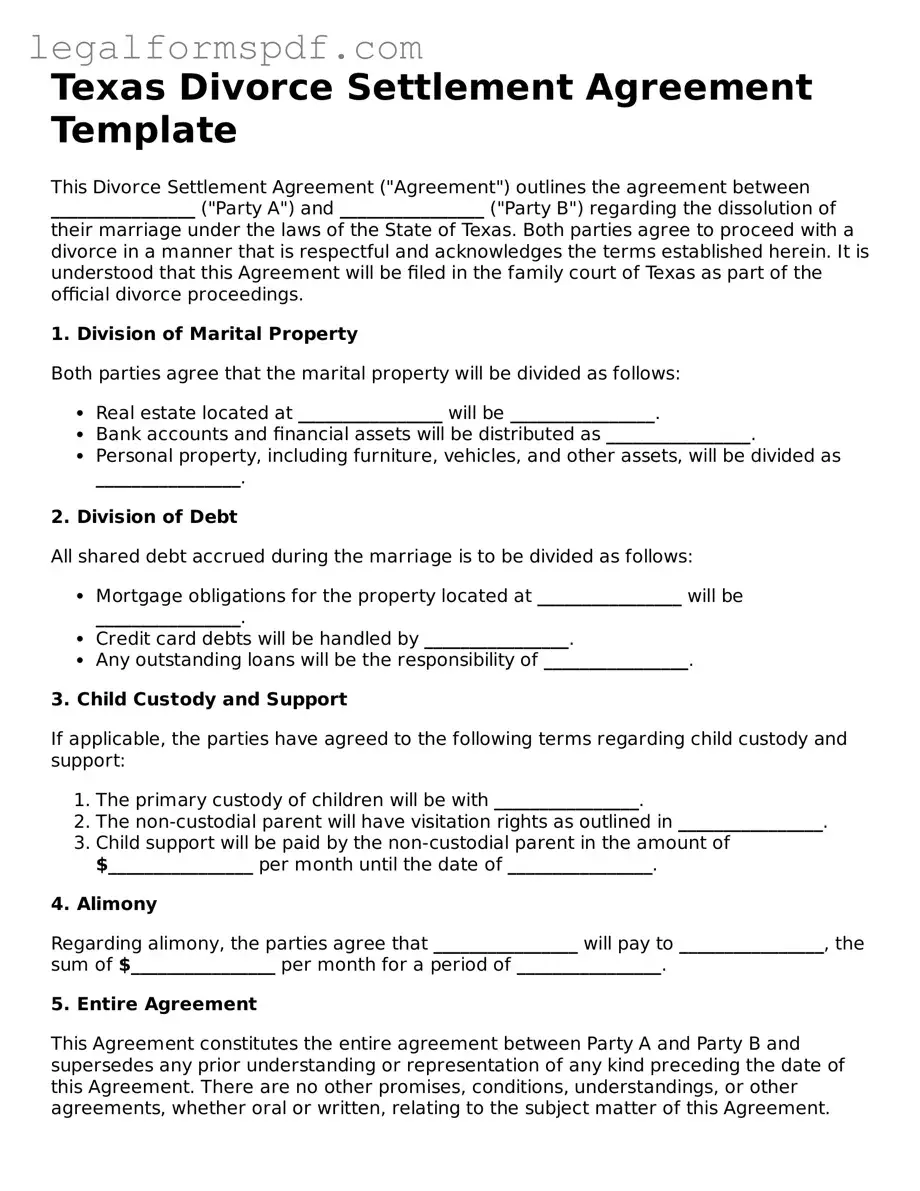Texas Divorce Settlement Agreement Template
This Divorce Settlement Agreement ("Agreement") outlines the agreement between ________________ ("Party A") and ________________ ("Party B") regarding the dissolution of their marriage under the laws of the State of Texas. Both parties agree to proceed with a divorce in a manner that is respectful and acknowledges the terms established herein. It is understood that this Agreement will be filed in the family court of Texas as part of the official divorce proceedings.
1. Division of Marital Property
Both parties agree that the marital property will be divided as follows:
- Real estate located at ________________ will be ________________.
- Bank accounts and financial assets will be distributed as ________________.
- Personal property, including furniture, vehicles, and other assets, will be divided as ________________.
2. Division of Debt
All shared debt accrued during the marriage is to be divided as follows:
- Mortgage obligations for the property located at ________________ will be ________________.
- Credit card debts will be handled by ________________.
- Any outstanding loans will be the responsibility of ________________.
3. Child Custody and Support
If applicable, the parties have agreed to the following terms regarding child custody and support:
- The primary custody of children will be with ________________.
- The non-custodial parent will have visitation rights as outlined in ________________.
- Child support will be paid by the non-custodial parent in the amount of $________________ per month until the date of ________________.
4. Alimony
Regarding alimony, the parties agree that ________________ will pay to ________________, the sum of $________________ per month for a period of ________________.
5. Entire Agreement
This Agreement constitutes the entire agreement between Party A and Party B and supersedes any prior understanding or representation of any kind preceding the date of this Agreement. There are no other promises, conditions, understandings, or other agreements, whether oral or written, relating to the subject matter of this Agreement.
6. Governing Law
This Agreement shall be governed by and construed in accordance with the laws of the State of Texas, without regard to its conflict of law provisions.
This Agreement is signed on the _____ day of ____________, 20____.
Party A Signature: ________________
Party B Signature: ________________
